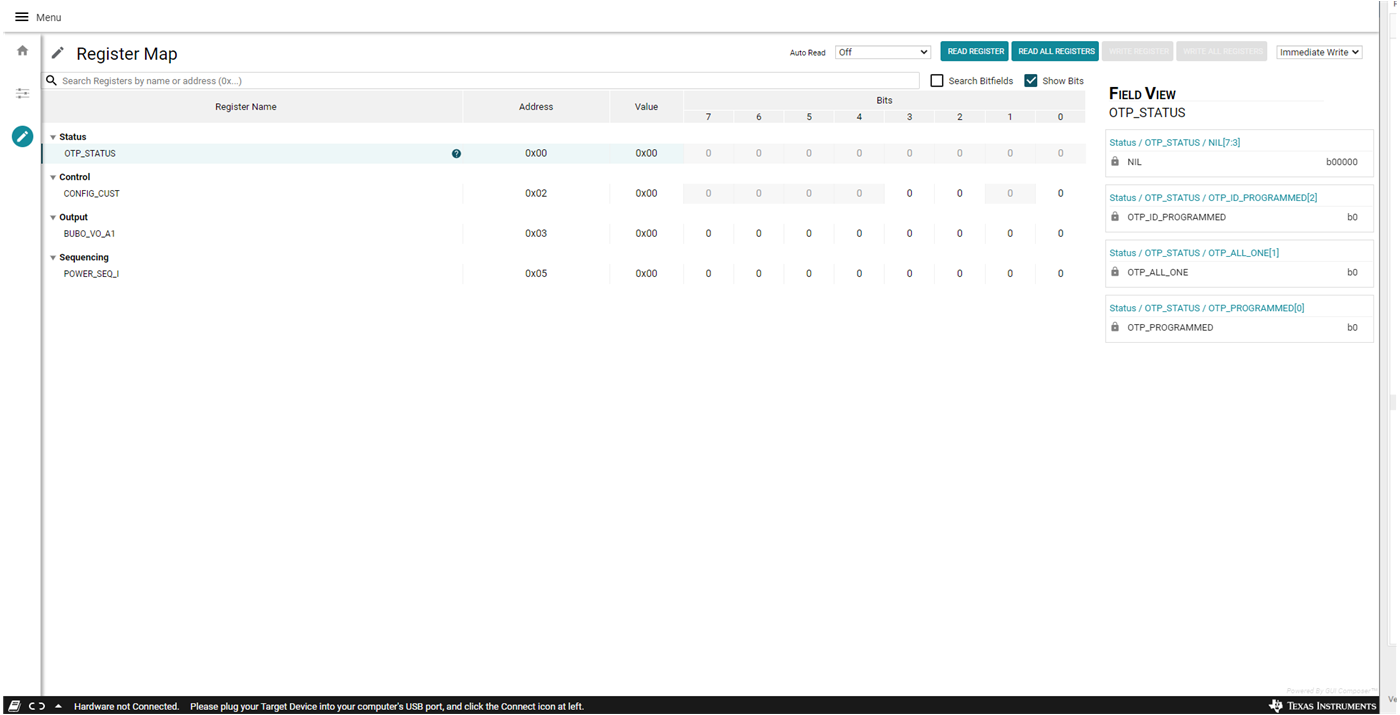SLVUD04 August 2024 TPSM83102
- 1
- Description
- Features
- 4
- 1Evaluation Module Overview
- 2Hardware
- 3Software
- 4Hardware Design Files
- 5Additional Information
3.3.3 Register Map Screen
The Register Map screen shows a register-wise view of all parameters. Here, single registers can be read or written to the device (if applicable). Refer to Section 3.4 for a detailed description of the TPSM83102 and TPSM83103 registers.
 Figure 3-4 GUI Register Map Screen
Figure 3-4 GUI Register Map Screen